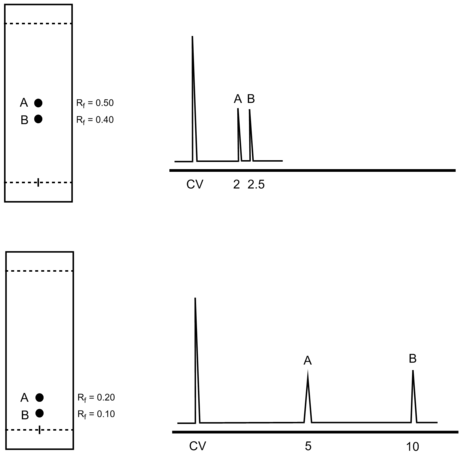Running a flash column
- Page ID
- 221853
\( \newcommand{\vecs}[1]{\overset { \scriptstyle \rightharpoonup} {\mathbf{#1}} } \)
\( \newcommand{\vecd}[1]{\overset{-\!-\!\rightharpoonup}{\vphantom{a}\smash {#1}}} \)
\( \newcommand{\dsum}{\displaystyle\sum\limits} \)
\( \newcommand{\dint}{\displaystyle\int\limits} \)
\( \newcommand{\dlim}{\displaystyle\lim\limits} \)
\( \newcommand{\id}{\mathrm{id}}\) \( \newcommand{\Span}{\mathrm{span}}\)
( \newcommand{\kernel}{\mathrm{null}\,}\) \( \newcommand{\range}{\mathrm{range}\,}\)
\( \newcommand{\RealPart}{\mathrm{Re}}\) \( \newcommand{\ImaginaryPart}{\mathrm{Im}}\)
\( \newcommand{\Argument}{\mathrm{Arg}}\) \( \newcommand{\norm}[1]{\| #1 \|}\)
\( \newcommand{\inner}[2]{\langle #1, #2 \rangle}\)
\( \newcommand{\Span}{\mathrm{span}}\)
\( \newcommand{\id}{\mathrm{id}}\)
\( \newcommand{\Span}{\mathrm{span}}\)
\( \newcommand{\kernel}{\mathrm{null}\,}\)
\( \newcommand{\range}{\mathrm{range}\,}\)
\( \newcommand{\RealPart}{\mathrm{Re}}\)
\( \newcommand{\ImaginaryPart}{\mathrm{Im}}\)
\( \newcommand{\Argument}{\mathrm{Arg}}\)
\( \newcommand{\norm}[1]{\| #1 \|}\)
\( \newcommand{\inner}[2]{\langle #1, #2 \rangle}\)
\( \newcommand{\Span}{\mathrm{span}}\) \( \newcommand{\AA}{\unicode[.8,0]{x212B}}\)
\( \newcommand{\vectorA}[1]{\vec{#1}} % arrow\)
\( \newcommand{\vectorAt}[1]{\vec{\text{#1}}} % arrow\)
\( \newcommand{\vectorB}[1]{\overset { \scriptstyle \rightharpoonup} {\mathbf{#1}} } \)
\( \newcommand{\vectorC}[1]{\textbf{#1}} \)
\( \newcommand{\vectorD}[1]{\overrightarrow{#1}} \)
\( \newcommand{\vectorDt}[1]{\overrightarrow{\text{#1}}} \)
\( \newcommand{\vectE}[1]{\overset{-\!-\!\rightharpoonup}{\vphantom{a}\smash{\mathbf {#1}}}} \)
\( \newcommand{\vecs}[1]{\overset { \scriptstyle \rightharpoonup} {\mathbf{#1}} } \)
\( \newcommand{\vecd}[1]{\overset{-\!-\!\rightharpoonup}{\vphantom{a}\smash {#1}}} \)
\(\newcommand{\avec}{\mathbf a}\) \(\newcommand{\bvec}{\mathbf b}\) \(\newcommand{\cvec}{\mathbf c}\) \(\newcommand{\dvec}{\mathbf d}\) \(\newcommand{\dtil}{\widetilde{\mathbf d}}\) \(\newcommand{\evec}{\mathbf e}\) \(\newcommand{\fvec}{\mathbf f}\) \(\newcommand{\nvec}{\mathbf n}\) \(\newcommand{\pvec}{\mathbf p}\) \(\newcommand{\qvec}{\mathbf q}\) \(\newcommand{\svec}{\mathbf s}\) \(\newcommand{\tvec}{\mathbf t}\) \(\newcommand{\uvec}{\mathbf u}\) \(\newcommand{\vvec}{\mathbf v}\) \(\newcommand{\wvec}{\mathbf w}\) \(\newcommand{\xvec}{\mathbf x}\) \(\newcommand{\yvec}{\mathbf y}\) \(\newcommand{\zvec}{\mathbf z}\) \(\newcommand{\rvec}{\mathbf r}\) \(\newcommand{\mvec}{\mathbf m}\) \(\newcommand{\zerovec}{\mathbf 0}\) \(\newcommand{\onevec}{\mathbf 1}\) \(\newcommand{\real}{\mathbb R}\) \(\newcommand{\twovec}[2]{\left[\begin{array}{r}#1 \\ #2 \end{array}\right]}\) \(\newcommand{\ctwovec}[2]{\left[\begin{array}{c}#1 \\ #2 \end{array}\right]}\) \(\newcommand{\threevec}[3]{\left[\begin{array}{r}#1 \\ #2 \\ #3 \end{array}\right]}\) \(\newcommand{\cthreevec}[3]{\left[\begin{array}{c}#1 \\ #2 \\ #3 \end{array}\right]}\) \(\newcommand{\fourvec}[4]{\left[\begin{array}{r}#1 \\ #2 \\ #3 \\ #4 \end{array}\right]}\) \(\newcommand{\cfourvec}[4]{\left[\begin{array}{c}#1 \\ #2 \\ #3 \\ #4 \end{array}\right]}\) \(\newcommand{\fivevec}[5]{\left[\begin{array}{r}#1 \\ #2 \\ #3 \\ #4 \\ #5 \\ \end{array}\right]}\) \(\newcommand{\cfivevec}[5]{\left[\begin{array}{c}#1 \\ #2 \\ #3 \\ #4 \\ #5 \\ \end{array}\right]}\) \(\newcommand{\mattwo}[4]{\left[\begin{array}{rr}#1 \amp #2 \\ #3 \amp #4 \\ \end{array}\right]}\) \(\newcommand{\laspan}[1]{\text{Span}\{#1\}}\) \(\newcommand{\bcal}{\cal B}\) \(\newcommand{\ccal}{\cal C}\) \(\newcommand{\scal}{\cal S}\) \(\newcommand{\wcal}{\cal W}\) \(\newcommand{\ecal}{\cal E}\) \(\newcommand{\coords}[2]{\left\{#1\right\}_{#2}}\) \(\newcommand{\gray}[1]{\color{gray}{#1}}\) \(\newcommand{\lgray}[1]{\color{lightgray}{#1}}\) \(\newcommand{\rank}{\operatorname{rank}}\) \(\newcommand{\row}{\text{Row}}\) \(\newcommand{\col}{\text{Col}}\) \(\renewcommand{\row}{\text{Row}}\) \(\newcommand{\nul}{\text{Nul}}\) \(\newcommand{\var}{\text{Var}}\) \(\newcommand{\corr}{\text{corr}}\) \(\newcommand{\len}[1]{\left|#1\right|}\) \(\newcommand{\bbar}{\overline{\bvec}}\) \(\newcommand{\bhat}{\widehat{\bvec}}\) \(\newcommand{\bperp}{\bvec^\perp}\) \(\newcommand{\xhat}{\widehat{\xvec}}\) \(\newcommand{\vhat}{\widehat{\vvec}}\) \(\newcommand{\uhat}{\widehat{\uvec}}\) \(\newcommand{\what}{\widehat{\wvec}}\) \(\newcommand{\Sighat}{\widehat{\Sigma}}\) \(\newcommand{\lt}{<}\) \(\newcommand{\gt}{>}\) \(\newcommand{\amp}{&}\) \(\definecolor{fillinmathshade}{gray}{0.9}\)
Determining the amount of stationary phase
Now that you have found a proper solvent system using TLC you will start preparing your column. Before packing your column you must first determine the amount of silica you will use to choose the appropriate size of column. Determining the optimal amount of silica needed is usually the hardest and most important factor in the success of a flash chromatography. Using too little silica will result in poor separation with mixed fractions and implies a second purification; too much silica will result in very long purification time and wasting of solvent, silica and test tubes.
| Separation | Easy | Normal | Difficult |
|---|---|---|---|
| mL of silica / g of crude | 20 | 40-180 | 200+ |
| g of silica / g of crude | 10 | 20-90 | 100+ |
| % (w/w) load | 1% | 2-9% | 10% |
There is no definite formula to determine the right amount of silica to use. The two factors to take into consideration are:
- Obviously the more product you have and the closer the impurities are, the more silica gel you will need.
A good rule of thumb is:- These are obviously general guidelines and will not apply to all systems. If you are a young chemist with little experience, asking a more experienced colleague for advice is probably your safest bet. After running multiple columns you will get a better idea of the amount needed.
Choosing the right column and test tubes
- Therefore a column should never be longer than necessary to achieve the desired separation.
Try to find a column that will have the straight portion filled up somewhere between 1/4 to 2/3.
Columns with a fritted disc at the bottom are easier to pack, but depending on the age of the column, the fritt might be partially to fully clogged which will make the separation take forever, use at your own risk.
The size of the test tubes will also depend on the size of your column as well as your separation. The smaller the column, the smaller the fractions will need to be. Also, the closer the impurities are to your desired product, the smaller the fractions will need to be. As a general rule of thumb, fractions should be about a quarter of your column volume. So if you have a column volume of 80 mL, you should use test tubes that can accommodate 20 mL. For larger columns, the use of Erlenmeyers instead of test tubes is often recommended.
In the case of difficult separations, smaller fractions may be taken when close to the desired product to minimize the number of mixed fractions.Pack the column
- Silica gel is toxic and should be handled in a well ventilated hood at all times!
Start by preparing your eluant. Prepare about three times the volume of silica gel you are going to use at half the polarity you found using TLC.
ex: You need 50 mL of silica gel and your desired product has an Rf of 0.3 in 20% EtOAc/hexane. Prepare 100 mL of 10% EtOAc/hexane
If your column does not have a fritted disc at the bottom you need to plug the stopcock to not lose your silica gel: with the stopcock closed, using a long metal rod (unfolded wire hanger) or glass rod plug the bottom of the column with a small piece of glass wool (preferred over cotton). Then fill the conical portion of your column with sand so that your column has the same width from start to finish. Set up your column in your hood using a ring and a clamp. Your column should be perfectly vertical as crooked columns lead to less effective separations.
Get the desired amount of silica gel in a beaker that can hold at least twice that volume.
With the stopcock open, pour about a quarter of your eluant into the column. This will prevent disturbing your sand layer when you pour the silica gel slurry on top. Pour the rest of your eluant in your silica beaker while stirring with a glass rod until you get an even slurry. The slurry should be stirred until all the air bubbles have been removed from the silica gel. Air bubbles will render the separation much less efficient.
With the stopcock open, pour the slurry into the column using a powder funnel. Be sure to rinse the beaker with eluant in order to get all the silica gel into the column. Also be sure to rinse any silica stuck to the sides of the column into the solvent.
Apply pressure to the column to pack the silica gel and push the solvent through. Once the solvent level gets to about half an inch from the top of the silica, gently release the pressure and let the rest of the solvent flow through by gravity. Once the solvent is flush with the top of the silica, gently tap the sides of your column with a cork ring. This will improve the packing of your silica bed and result in a thin layer of solvent showing up at the top of your column. Wait until it flows through your column and repeat the taping process. Continue until the silica is perfectly packed and taping has no more effect.
Protect your silica column by adding a thin layer (1-2 cm) of sand to the top of it.Prepare and load your sample
There are three different ways to load a product onto a column: neat, in solution or dry.
- Ideally the crude product should be dissolved into the least polar solvent possible such as hexane or pentane. Unfortunately a lot of products will be insoluble in those solvents. In this case, the easiest is to dissolve the crude mixture into dichloromethane. Dichloromethane will dissolve most organic products while still being relatively non polar. The product should also be dissolved in the minimum amount of solvent in order to start with the thinnest band possible. If too much solvent is added it is best to concentrate it back down and start again.
Once the crude mixture is in solution, open the stopcock and using a long glass pipette carefully add the solution to your column by running it along the wall of the column as far down as you can. Once all the solution has been added, let it absorb onto the silica gel. Then rinse your crude material flask with a small volume of eluant and carefully add it to your column, rinsing the walls of the column. Let it absorb and repeat two more times. The idea is to get all the crude material absorbed onto the silica gel using the smallest amount of solvent possible so as to not dilute it too much.
After the three rinses, fill your column with eluant. At first using a pipette until you have a few centimeters of solvent then straight from the Erlenmeyer. Always run the solvent down the walls of the column to avoid disturbing your silica gel.Running the column
Flushing and drying the column
Once all the products of interest have eluted out of the column you always want to flush it to make sure you get everything out just in case. To do that just put a large Erlenmeyer flask under your column, fill it up with neat EtOAc or 20% MeOH/EtOAc depending on the polarity of your products, and push all the solvent out until the silica is dry. It is very difficult to get silica out until it is completely dry so make sure you give it enough time before attempting to empty it. For large columns this can take up to a few hours. Once it is fully dried, silica will easily flow out of the column. Silica gel is toxic and should be disposed of accordingly.
Isolating your pure product
Using your TLCs, combine all pure fractions of the desired product. Any mixed fractions can be combined and repurified using a second smaller column. Once the product has been identified by analytical methods (NMR, IR, MS) and the weight recovered is in the expected range, the other fractions can be discarded accordingly. In the event that the isolated product is not the desired one or the recovered weight is much lower than expected, analyzing the other fractions and the flush can provide answers on where the desired product went.
Contributors
- OChemOnline
- Therefore a column should never be longer than necessary to achieve the desired separation.
- These are obviously general guidelines and will not apply to all systems. If you are a young chemist with little experience, asking a more experienced colleague for advice is probably your safest bet. After running multiple columns you will get a better idea of the amount needed.

